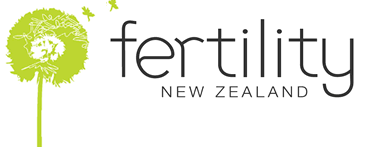Premature Ovarian Failure
Premature ovarian failure (POF) is usually defined as menopause under the age of 40 and occurs in about 1% of women. Before periods totally cease there is often a length of time when periods are irregular or when the follicle stimulating hormone (FSH) is raised to around 15 to 20 IU. There is no test as yet that can predict the number of ovulations that a woman has left in her reproductive lifetime.
There are a variety of causes of POF but almost all are due to the ovaries running out of eggs. Why ovaries run out of eggs is due to the factors that influence ovarian ageing.
Ovarian ageing
The functioning of the ovaries depends upon the number of immature eggs contained by the ovaries. The immature eggs migrate to the ovaries during foetal life and then divide so that at about 5 months into a pregnancy a female baby has about 7 million immature eggs. From this time onwards, some of the eggs start to die off, such that at birth there are around 1 to 2 million eggs remaining. At puberty, only about 250,000 eggs remain because of this atresia process.
Menopause occurs when there are about 1000 eggs remaining. This means that if a woman starts off with fewer eggs at birth her menopause will occur earlier and, if an ovary is removed an earlier menopause will also follow.
Causes
In two thirds of women with premature ovarian failure, the cause cannot be identified. In the future, it may be possible to ascertain whether these cases are truly unexplained or due to, as yet, undiscovered genetic, immunological or environmental issues. Other causes include genetic conditions such as Turner syndrome, where one of the X chromosomes is missing, or fragile X syndrome which may cause learning disabilities in men. There may be a familial history of premature ovarian failure, which may be related to an abnormality on one of the X chromosomes.
Some women experience ovarian failure after chemotherapy or radiotherapy to the pelvis. Others have their ovaries removed because of severe endometriosis or ovarian cysts. Rarely, ovarian failure may follow a bacterial or viral infection. Toxins in the environment may also have a role. The best known toxin is smoking which lowers the age of menopause by about two years.
Management
Premature ovarian failure is a devastating diagnosis for most women and counselling should be accessed through a local fertility clinic. Loss of fertility is a huge issue to deal with. Egg donation is generally the only fertility option available, although spontaneous pregnancies may still occasionally occur.
Menopausal symptoms such as hot flushes, poor sleep and mood swings may be helped by hormone replacement therapy (HRT). There are some risks associated with HRT including a slightly increased risk of breast cancer, stroke and venous thromboembolism. The pros and cons of HRT need to be carefully discussed with your doctor. Osteoporosis or thinning of the bones occurs more commonly in women with POF. There are a variety of treatments available, however regular weight bearing exercise and a diet containing good amounts of calcium are always recommended.
Egg donation
Egg donation is usually the only option available to women with POF. An egg donor is recruited – ideally aged 36 or less who has completed her family. The donor undergoes a careful medical and genetic history, a physical examination and counselling. The donor is also tested for infectious diseases. Once the donor has been cleared, she undergoes an IVF cycle. An IVF cycle involves a number of hormone injections to stimulate the ovaries to produce a batch of mature eggs. These eggs are then removed from the donor’s ovaries and are fertilised using the recipient’s partner’s sperm. The resulting embryos are placed in the recipient’s uterus. There is the possibility that a cycle of egg donation may be publicly funded and the chances of a successful pregnancy are around 45% per attempt.
More about egg donation


